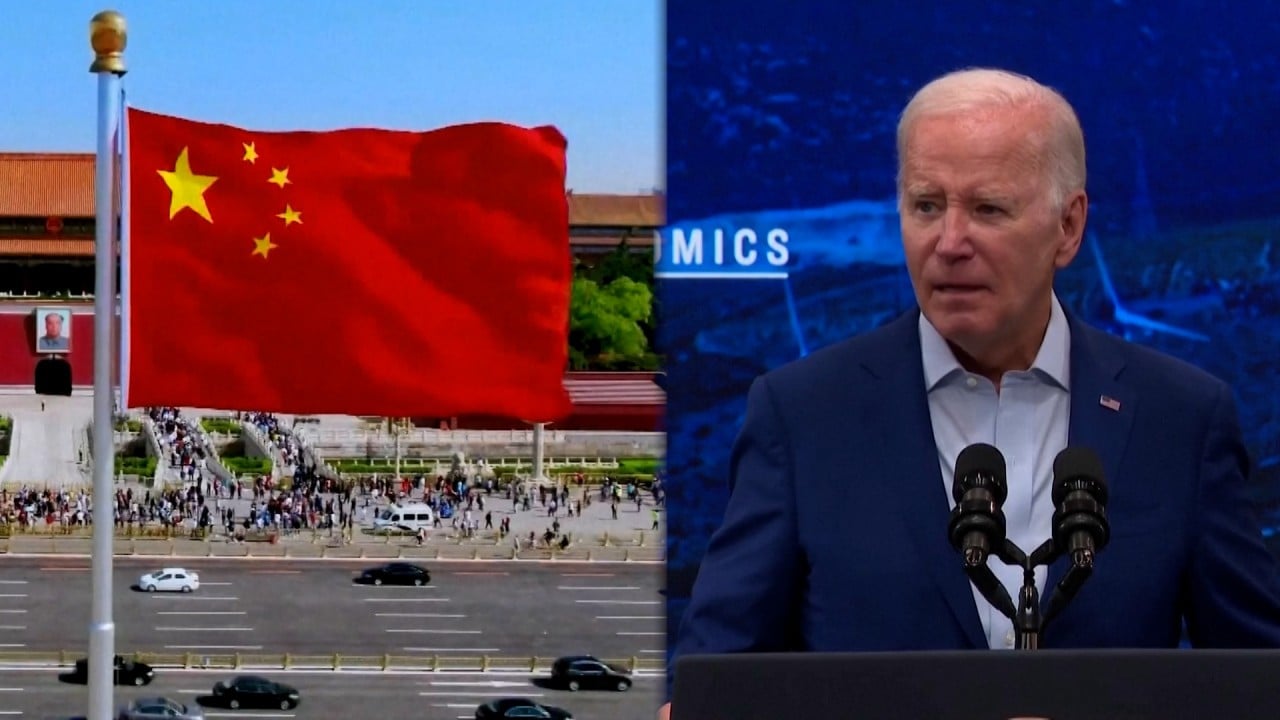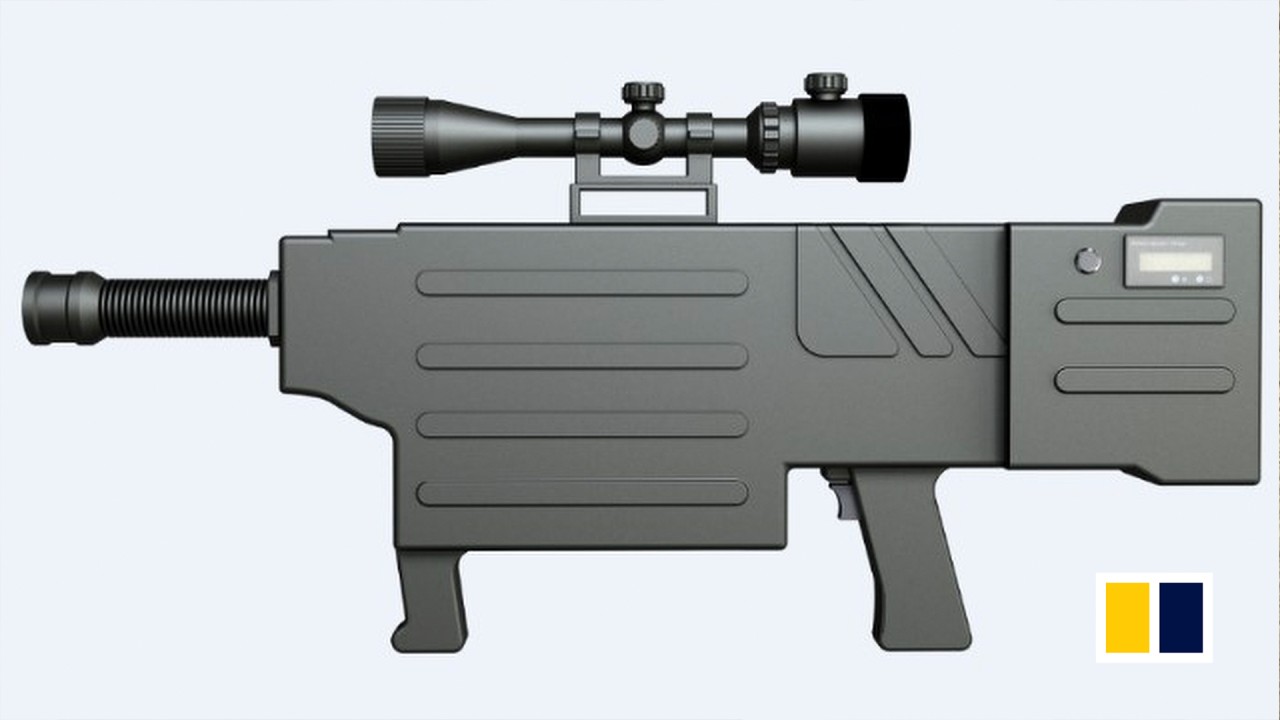
Chinese scientists build powerful microwave weapon that can fire from a moving truck, using Stirling engine to cool technology
- Scientists in China have used the cooling properties of the Stirling engine to boost the strength of a high-power microwave weapon
- Tests of the weapon show it consumes just one-fifth of the energy of current methods and can operate continuously for four hours
A research team in China has developed a high-power microwave (HPM) weapon driven by four compact and efficient Stirling engines.
These engines, which efficiently convert thermal energy into mechanical energy, working together as a reverse heat pump and can help a superconducting coil generate a magnetic field with a strength of up to four tesla.
This is the world’s first openly reported HPM weapon based on Stirling engine technology.
Microwave weapons without a huge energy cost
According to the project team’s preliminary tests, it consumes only one-fifth of the energy required by current methods and can operate continuously for four hours without attenuation.
Its operation also remains unaffected by severe vibrations, even when the truck is moving at high speeds on the highway, making it much more difficult for enemies to locate.
The weapon was developed by the Northwest Institute of Nuclear Technology in Xian and the Chinese Academy of Sciences’ Institute of Electrical Engineering in Beijing.
Currently, HPM weapons driven by strong magnetic fields “suffer from the drawbacks of huge energy consumption and large size,” the project team, led by electronic engineering scientist Xu Ce, wrote in a paper published last month in the Chinese academic journal High Power Laser and Particle Beams.
The development of low-energy, compact superconducting magnet systems will play an important role in the large-scale production and use of such weapons, added Xu and his collaborators.
The secret of the Stirling engine
The Stirling engine plays a key role in this weapon system. It can function as a refrigerator, rapidly moving heat away from one location.
Because the engine operates according to the principle of gas expansion due to heat, it requires very few moving parts and can be made very small, with some models even being used in satellites and missiles.
However, the Stirling engine has a drawback: its cooling limit can only reach 40 degrees above absolute zero (minus 273.15 Celsius or minus 459.67 Fahrenheit), but low-temperature superconductors used to generate strong magnetic fields must operate within a range of four degrees above absolute zero.
Chinese scientists unveil design for new electronic warfare weapon to the world
Superconducting magnets use powerful electrical currents flowing through zero-resistance coils to generate magnetic fields.
If the magnetic field is not strong enough, the quality of the electron beam produced by the microwave weapon will be poor, and it will not be able to travel far.
To address this issue, Xu’s team used the latest superconducting tape to make the coils.
This second-generation, high-temperature superconducting material, known as REBCO, can achieve zero resistance between 40 and 50 degrees above absolute zero. This tape, produced by Shanghai Superconductor Technology, is the highest-performing and lowest-cost product worldwide.
When Xu’s team combined this superconducting material with the Stirling engine, they achieved a temperature of 48 degrees above absolute zero and generated a magnetic field exceeding four tesla.
At the same time, “the overall energy consumption was reduced by 80 per cent compared to traditional technology,” they wrote in the paper.
How US sanctions led to the weapon’s creation
Users of the second-generation high-temperature superconductors in China had been heavily reliant on foreign imports. In 2017, China’s annual production capability of this tape was only a few dozen kilometres, and the quality of the Chinese materials paled in comparison to that of the West, especially the United States.
In an attempt to hinder China’s hi-tech progress, the US government issued a ban in 2018, stopping Western companies from exporting REBCO and other cutting-edge superconducting materials to China.
‘World first’: Chinese scientists create high-power microwave weapon for drones
With increased revenue, the business ramped up investment in research and development, and shattered world records in product performance.
These superconducting materials have now found their way into many scientific research facilities or infrastructures across China, such as large-scale superconducting transmission lines, high-speed railways and devices capable of generating the most powerful magnetic fields on the planet.
Even some national laboratories and commercial fusion companies in the US have forsaken domestic suppliers in favour of China’s new superconducting wire.
When will China’s microwave weapon go into battle?
Xu’s team did not disclose in the paper when this new technology would be ready for the battlefield.
They said that during testing, certain issues requiring further refinement came to light, including refrigeration power falling short of initial design goals and a notable dip in system stability beyond four hours of continuous operation.
“Although it meets the basic requirements, there’s still room for enhancement in the overall system, and further miniaturisation is attainable within the current structure,” they wrote.
Shanghai Superconductor aims to significantly boost its production capacity to 2,000km per year by the end of 2024 and further drive down the price of superconducting tape.



